Voltcraft DVM330GN Handleiding
Voltcraft
Meetapparatuur
DVM330GN
Bekijk gratis de handleiding van Voltcraft DVM330GN (4 pagina’s), behorend tot de categorie Meetapparatuur. Deze gids werd als nuttig beoordeeld door 73 mensen en kreeg gemiddeld 4.9 sterren uit 37 reviews. Heb je een vraag over Voltcraft DVM330GN of wil je andere gebruikers van dit product iets vragen? Stel een vraag
Pagina 1/4

BEDIENUNGSANLEITUNG
VERSION 08/14
DIGITALES VOLTMETERMODUL
BEST.-NR.: 126505 (DVM-230) Grün
BEST.-NR.: 126506 (DVM-330) Grün
BEST.-NR.: 126562 (DVM 230B) Blau
BEST.-NR.: 126563 (DVM 230GN) Grün negativ
BEST.-NR.: 126564 (DVM 230RN) Rot negativ
BEST.-NR.: 126567 (DVM 230W) Weiß
BEST.-NR.: 126568 (DVM 330B) Blau
BEST.-NR.: 126570 (DVM 330RN) Rot negativ
BEST.-NR.: 126571 (DVM 330W) Weiß
BEST.-NR.: 126598 (DVM 330GN) Grün negativ
BESTIMMUNGSGEMÄSSE VERWENDUNG
Das Modul ist zum Einbau in Geräte oder Gehäuse vorgesehen. Es dient zur Anzeige von Gleichspannungswerten im
Bereich von 0 bis 200 mV (DC). Durch individuelle, externe Beschaltungen können auch andere physikalische Größen
wie z.B. Gleichstrom oder Temperaturen angezeigt werden. Die Messeinheiten und Dezimalpunkte sind zuschaltbar. Die
Polaritätsanzeige erfolgt automatisch.
Eine Anzeigenbeleuchtung ist eingebaut; diese kann wahlweise mit der Betriebsspannung oder mit 12 V/DC versorgt
werden.
Das Modul darf nur bis zu einer Spannung von 48 V/DC (über optionale Spannungsteiler) betrieben
werden. Ab einer Spannung von >48 V müssen die entsprechenden Vorschriften bezüglich Luft-
und Kriechstrecken für den Berührungsschutz beachtet werden. Der Sicherheitsabstand zu
berührungsgefährlichen Spannungen/Leitern muss unbedingt beachtet und eingehalten werden.
Der Messeingang muss von der Spannungsversorgung galvanisch getrennt sein und darf nicht
verbunden werden.
Das Modul wird über eine externe 9 V/DC-Spannungsquelle versorgt. Der Anschluss erfolgt auf der Modulrückseite über
eine Stiftleiste. Einige Lötbrücken müssen für die Wahl der Messeinheiten gesetzt werden. Eine Data-Hold-Funktion zum
„Einfrieren“ des Messwertes ist vorhanden.
Aus Sicherheits- und Zulassungsgründen (CE) dürfen Sie das Produkt nicht umbauen und/oder verändern. Falls Sie das
Produkt für andere Zwecke verwenden, als zuvor beschrieben, kann das Produkt beschädigt werden. Außerdem kann eine
unsachgemäße Verwendung Gefahren wie zum Beispiel Kurzschluss, Brand, Stromschlag, etc. hervorrufen. Lesen Sie
sich die Bedienungsanleitung genau durch und bewahren Sie diese auf. Reichen Sie das Produkt nur zusammen mit der
Bedienungsanleitung an dritte Personen weiter.
LIEFERUMFANG
• Digitales Voltmetermodul
• Bedienungsanleitung
SICHERHEITSHINWEISE
Lesen Sie sich die Bedienungsanleitung aufmerksam durch und beachten Sie insbesondere die
Sicherheitshinweise. Falls Sie die Sicherheitshinweise und die Angaben zur sachgemäßen Handhabung
in dieser Bedienungsanleitung nicht befolgen, übernehmen wir für dadurch resultierende Personen-/
Sachschäden keine Haftung. Außerdem erlischt in solchen Fällen die Gewährleistung/Garantie.
a) Personen / Produkt
• Das Produkt ist kein Spielzeug. Halten Sie es von Kindern und Haustieren fern.
• Lassen Sie das Verpackungsmaterial nicht achtlos liegen. Dieses könnte für Kinder zu einem gefährlichen
Spielzeug werden.
• Schützen Sie das Produkt vor extremen Temperaturen, direktem Sonnenlicht, starken Erschütterungen, hoher
Feuchtigkeit, Nässe, brennbaren Gasen, Dämpfen und Lösungsmitteln.
• Setzen Sie das Produkt keiner mechanischen Beanspruchung aus.
• Wenn kein sicherer Betrieb mehr möglich ist, nehmen Sie das Produkt außer Betrieb und schützen Sie es vor
unbeabsichtigter Verwendung. Der sichere Betrieb ist nicht mehr gewährleistet, wenn das Produkt:
- sichtbare Schäden aufweist,
- nicht mehr ordnungsgemäß funktioniert,
- über einen längeren Zeitraum unter ungünstigen Umgebungsbedingungen gelagert wurde oder
- erheblichen Transportbelastungen ausgesetzt wurde.
• Gehen Sie vorsichtig mit dem Produkt um. Durch Stöße, Schläge oder dem Fall aus bereits geringer Höhe
wird es beschädigt.
• Beachten Sie auch die Sicherheitshinweise und Bedienungsanleitungen der übrigen Geräte, an die das
Produkt angeschlossen wird.
b) Sonstiges
• Wenden Sie sich an eine Fachkraft, wenn Sie Zweifel über die Arbeitsweise, die Sicherheit oder den Anschluss
des Produktes haben.
• Lassen Sie Wartungs-, Anpassungs- und Reparaturarbeiten ausschließlich von einem Fachmann bzw. einer
Fachwerkstatt durchführen.
Sollten Sie sich über den korrekten Anschluss bzw. Betrieb nicht im Klaren sein oder sollten sich Fragen ergeben, die nicht
im Laufe der Bedienungsanleitung abgeklärt werden, so setzen Sie sich bitte mit unserer technischen Auskunft oder einem
anderen Fachmann in Verbindung.
ANSCHLUSS
a) Übersicht der Leiterplatte
Auf der Modulrückseite erfolgen alle Anschlüsse und Funktions-Lötbrücken.
Dieses Gerät kann für verschiedene Spannungsbereiche
konguriert werden, indem Widerstände an die Positionen RA
und RB gelötet werden.
b) Wahl der Maßeinheit
Wählen Sie die erforderliche Maßeinheit und den für Ihren Messbereich erforderlichen Dezimalpunkt nach
nebenstehender Skizze aus und setzen die entsprechende Lötbrücke („ON“). Siehe Beispiel-Skizze.
Alle nicht benötigten Felder müssen auf „OFF“ gesetzt werden, da diese sonst nicht
eindeutig ausgeblendet werden.
c) Anschluss der Stiftleiste CN1
Der elektrische Anschluss erfolgt über die Stiftleiste CN1. Die entsprechenden Funktionen entnehmen Sie bitte der folgenden
Tabelle.
Pin Bezeichnung Funktion
1 IN HI Messeingang + (0 - 200 mV/DC)
2 IN LO Messeingang – (Bezugspotential)
3 VDD Betriebsspannung +9 V/DC
4 VSS Betriebsspannung -
5 BL+ Anzeigenbeleuchtung +
6 Anzeigenbeleuchtung -BL -
7 HOLD Data-Hold (Anschluss an VDD)
8 Nicht belegt
d) Messeingang „IN HI“ und „IN LO“
Der Messeingang muss von der Spannungsversorgung galvanisch getrennt sein und darf nicht
verbunden werden.
„IN HI“ und „IN LO“ sind Differenzialeingänge. Sie reagieren auf die jeweils anliegende Spannung und nicht auf die Spannung
in Bezug zur Betriebsspannung. Als Messspannung darf nur eine Gleichspannung angelegt werden.
e) Betriebsspannung „VDD“ und „VSS“
Die Betriebsspannung (VDD) muss im Bereich von 9 V/DC (-0,5V/+1V) liegen. Eine Unter- oder Überschreitung ist nicht
zulässig und kann die Messwerte verfälschen bzw. das Modul zerstören.
Sinkt die Betriebsspannung unter 8,5 V wird in der Anzeige das Symbol „Batterie“ angezeigt. Wechseln Sie umgehendst
die Batterie bzw. regeln Sie die Eingangsspannung auf einen korrekten Spannungswert.
f) Anzeigenbeleuchtung „BL+“ und „BL-“
Die Anzeigenbeleuchtung kann durch Anlegen einer Spannung von wahlweise 9 V/DC oder 12 V/DC eingeschaltet werden.
Die Vorwiderstände für die Beleuchtung (LED´s) sind bereits im Modul
integriert. Ist eine Versorgungsspannung von 9 V/DC vorgesehen,
muss eine Lötbrücke an CN2 gesetzt werden (siehe Skizze). Bei 12
VDC bleibt diese offen.
g) Data-Hold „HOLD“
Der momentan dargestellte Anzeigenwert wird durch die Kontaktierung von „HOLD“ (Pin 7) zu „VDD“ (Pin3) festgehalten. Der
Wert bleibt so lange in der Anzeige, bis die Kontaktierung wieder aufgehoben wird.
h) Interne Referenzspannung „VR1“
Die interne Referenzspannung wird mit VR1 eingestellt. Die Spannung ist werksseitig auf 100,0 mV kalibriert; sie
kann entsprechend der jeweiligen Anwendung nachjustiert werden, beispielsweise um die Ungenauigkeiten externer
Spannungsteiler-Widerstände auszugleichen.
i) LCD Anzeigentest „LKT“
Die Testverbindung „LKT“ darf max. für 2 Sekunden überbrückt werden, da sonst das Modul beschädigt
wird.
Der Kontaktpunkt „LKT“ dient zur kurzzeitigen Überprüfung der Anzeigensegmente. Beim Überbrücken werden alle Segmente
zur Überprüfung angezeigt.
j) Schaltungsbeispiele
Schaltungsbeispiele entnehmen Sie bitte dem beiliegenden Blatt mit den verschiedenen
Anwendungsschaltungen.
PROBLEMBEHEBUNG
Symptom Ursache
Das LCD-Display zeigt „1“ Der Messwert liegt außerhalb des Messbereichs.
Das LCD-Display zeigt „-“ Die an „IN HI“ und „IN LO“ angelegte Spannung ist umgekehrt.
ENTSORGUNG
Elektronische Geräte sind Wertstoffe und gehören nicht in den Hausmüll.
Entsorgen Sie das Produkt am Ende seiner Lebensdauer gemäß den geltenden gesetzlichen Bestimmungen.
TECHNISCHE DATEN
Best.-Nr.: 126505 / 126562 / 126563 /
126564 / 126567
Best.-Nr.: 126506 / 126568 / 126570 /
126571 / 126598
Betriebsspannung: 9 V/DC 9 V/DC
Stromverbrauch: 2 mA 2 mA
Messbereich: 0 - 200 mV/DC 0 - 200 mV/DC
Anzeige: LCD, 1999 LCD, 1999
Messimpedanz: 100 MΩ 100 MΩ
Auösung: 0,1 mV 0,1 mV
Genauigkeit: ±0,5 % + 10 digit ±0,5 % + 10 digit
Messrate: 3 Messungen/s 3 Messungen/s
Temperaturstabilität: 30 ppm/ ºC 30 ppm/ ºC
Betriebstemperatur: 0 bis + 50 ºC 0 bis +50 ºC
Anzeigenbeleuchtung
Betriebsspannung:
9 V/DC 12 V/DC 9 V/DC 12 V/DC
Anzeigenbeleuchtung
Stromverbrauch:
15 mA 18 mA 30 mA 35 mA
Abmessungen (B x H x T): 48 x 24 x14 mm 72 x 36 x 14 mm
Impressum
Dies ist eine Publikation der Conrad Electronic SE, Klaus-Conrad-Str. 1, D-92240 Hirschau (www.conrad.com).
Alle Rechte einschließlich Übersetzung vorbehalten. Reproduktionen jeder Art, z. B. Fotokopie, Mikroverlmung, oder die Erfassung in
elektronischen Datenverarbeitungsanlagen, bedürfen der schriftlichen Genehmigung des Herausgebers. Nachdruck, auch auszugsweise,
verboten. Die Publikation entspricht dem technischen Stand bei Drucklegung.
© Copyright 2014 by Conrad Electronic SE V4_0814_02_JH

OPERATING INSTRUCTIONS
VERSION 08/14
DIGITAL VOLTMETER MODULE
ITEM NO.: 126505 (DVM-230) Green
ITEM NO.: 126506 (DVM-330) Green
ITEM NO.: 126562 (DVM 230B) Blue
ITEM NO.: 126563 (DVM 230GN) Green negative
ITEM NO.: 126564 (DVM 230RN) Red negative
ITEM NO.: 126567 (DVM 230W) White
ITEM NO.: 126568 (DVM 330B) Blue
ITEM NO.: 126570 (DVM 330RN) Red negative
ITEM NO.: 126571 (DVM 330W) White
ITEM NO.: 126598 (DVM 330GN) Green negative
INTENDED USE
The module is intended for installation in other devices or casings. It displays direct currents ranging from 0 to 200 mV (DC).
By means of individual, external circuits, other physical quantities such as direct current or temperatures can also be displayed.
The measuring units and decimals can be selected. The polarity is automatically displayed.
A display light is integrated; it can be supplied with the operating voltage or with 12 V/DC.
The module must not be operated at voltages greater than 48 V/DC (by an optional volt-age divider). For
a voltage over 48V the respective instructions concerning clearances to air and leakage paths for shock
protection must be complied with. Always observe and adhere to the safe distance for dangerous contact
voltages/wires.
The measuring input must be galvanically separated from the power supply and must not be connected.
The power supply of the module comes from an external 9 V/DC power supply unit. The connection is at the back of the module
in a pin contact strip. You will have to set some soldering links for the selection of the measuring units. There is a data hold
function to “freeze” the measuring value. The product is only to be used in dry indoor locations. !
For safety and approval purposes (CE), you must not rebuild and/or modify this product. If you use the product for purposes
other than those described above, the product may be damaged. In addition, improper use can cause hazards such as short
circuiting, re, electric shock etc. Read the instructions carefully and keep them. Make this product available to third parties
only together with its operating instructions.
DELIVERY CONTENT
• Digital voltmeter module
• Operating instructions
SAFETY INSTRUCTIONS
Read the operating instructions carefully and especially observe the safety information. If you do
not follow the safety instructions and information on proper handling in this manual, we assume no
liability for any resulting personal injury or damage to property. Such cases will invalidate the warranty/
guarantee.
a) Persons / Product
• The device is not a toy. Keep it out of the reach of children and pets.
• Do not leave packaging material lying around carelessly. These may become dangerous playing material for
children.
• Protect the product from extreme temperatures, direct sunlight, strong jolts, high humidity, moisture, ammable
gases, vapours and solvents.
• Do not place the product under any mechanical stress.
• If it is no longer possible to operate the product safely, take it out of operation and protect it from any accidental
use. Safe operation can no longer be guaranteed if the product:
- is visibly damaged,
- is no longer working properly,
- has been stored for extended periods in poor ambient conditions or
- has been subjected to any serious transport-related stresses.
• Please handle the product carefully. Jolts, impacts or a fall even from a low height can damage the product.
• Also observe the safety and operating instructions of any other devices which are connected to the product.
b) Miscellaneous
• Consult an expert when in doubt about operation, safety or connection of the device.
• Maintenance, modications and repairs are to be performed exclusively by an expert or at a qualied shop.
If you are not sure about the correct connection or use, or if questions arise which are not covered by these operating
instructions, please do not hesitate to contact our technical support or another qualied specialist.
CONNECTION
a) Overview of the PCB
All the connections and functional soldering links are made on the back of the
module.
This device can be congured for different voltage ranges, by
soldering resistors to the positions RA and RB.
b) Selection of the measuring unit
Select the necessary measuring unit and the decimal point you need for your measuring section from the
illustration on the right and set the respective soldering link to “ON”. See example drawing.
Please set all the elds you do not need to “OFF”, or they cannot be blanked out clearly.
c) Connection of the pin contact strip CN1
The electric connection of the module is done in the pin contact strip CN1. For the respective functions, please refer to the
following table.
Pin Description Function
1 IN HI Measurement input + (0 - 200 mV/DC)
2 IN LO Measurement input – (reference potential)
3 VDD Operation voltage +9 V/DC
4 VSS Operating voltage -
5 BL+ Display light +
6 Display light -BL -
7 HOLD Data hold (connection to VDD)
8 Not assigned
d) Measuring input “IN HI” and “IN LO”
The measuring input must be galvanically separated from the power supply and must not be connected.
“IN HI” and “IN LO” are differential inputs. They react to the voltage applied and not to the voltage relative to the operating
voltage. Only a direct voltage may be applied as the measurement voltage.
e) Operating voltage “VDD” and “VSS”
The operating voltage (VDD) must be in the range of 9 V/DC (-0.5 V/+1 V). Do not go below or above this voltage, because the
measuring results would be inaccurate and the module would be destroyed.
If the operating voltage drops below 7 V, the display shows “battery”. Replace the battery immediately or set the input
voltage to the correct value.
f) Display light “BL+” and “BL-“
The display light can be switched on by applying a voltage of either 9 V/DC or 12 V/DC.
The series resistors for the lights (LEDs) are integrated in the module.
If the operating voltage is to be 9 V/DC, a soldering link must be set at
CN2 (see illustration). It remains open for 12 V/DC.
g) Data-Hold „HOLD“
The value currently displayed is frozen by contacting the “HOLD” (pin 7) to “VDD” (pin 3). The value will remain in the display
until the contacts are removed.
h) Internal reference voltage “VR1”
The internal reference voltage is set with VR1. The voltage has been calibrated to 100.0 mV in the factory, it can be adjusted
according to the respective application, for example to compensate for inaccuracies of external voltage divider resistors.
i) LCD display test “LKT”
The test connection “LKT” must not be linked for more than 2 seconds, or the module would be
damaged.
The contact “LKT” serves for short-term checks of the display segments. When it is contacted, all the segments are shown
for a check.
j) Circuit examples
For the circuit examples, please refer to the enclosed sheet with the various application circuits..
TROUBLESHOOTING
Symptom Cause
The LCD shows “1” The measurement value is outside the measuring range.
The LCD shows “-” The voltage connected to “IN HI” and “IN LO” is reversed.
ENTSORGUNG
Electronic devices are recyclable waste and must not be disposed of in the household waste.
At the end of its service life, dispose of the product according to the relevant statutory regulations.
TECHNISCHE DATEN
Item no.: 126505 / 126562 / 126563 /
126564 / 126567
Item no.: 126506 / 126568 / 126570 /
126571 / 126598
Operating voltage: 9 V/DC 9 V/DC
Current consumption: 2 mA 2 mA
Measurement range: 0 - 200 mV/DC 0 - 200 mV/DC
Display: LCD, 1999 LCD, 1999
Measuring impedance: 100 MΩ 100 MΩ
Resolution: 0.1 mV 0.1 mV
Accuracy: ±0.5 % + 10 digit ±0.5 % + 10 digit
Measuring frequency: 3 measurements / sec 3 measurements / sec
Temperature stability: 30 ppm/ ºC 30 ppm/ ºC
Operating temperature: 0 to + 50 ºC 0 to +50 ºC
Display light operating voltage: 9 V/DC 12 V/DC 9 V/DC 12 V/DC
Display light current consumption: 15 mA 18 mA 30 mA 35 mA
Dimensions (W x H x D): 48 x 24 x14 mm 72 x 36 x 14 mm
Legal notice
This is a publication by Conrad Electronic SE, Klaus-Conrad-Str. 1, D-92240 Hirschau (www.conrad.com).
All rights including translation reserved. Reproduction by any method, e.g. photocopy, microlming, or the capture in electronic data processing
systems require the prior written approval by the editor. Reprinting, also in part, is prohibited. This publication represent the technical status at the
time of printing.
© Copyright 2014 by Conrad Electronic SE V4_0814_02_JH

MODE D’EMPLOI
VERSION 08/14
MODULE VOLTMÈTRE NUMÉRIQUE
Nº DE COMMANDE : 126505 (DVM-230) Vert
Nº DE COMMANDE : 126506 (DVM-330) Vert
Nº DE COMMANDE : 126562 (DVM 230B) Bleu
Nº DE COMMANDE : 126563 (DVM 230GN) Vert négatif
Nº DE COMMANDE : 126564 (DVM 230RN) Rouge négatif
Nº DE COMMANDE : 126567 (DVM 230W) Blanc
Nº DE COMMANDE : 126568 (DVM 330B) Bleu
Nº DE COMMANDE : 126570 (DVM 330RN) Rouge négatif
Nº DE COMMANDE : 126571 (DVM 330W) Blanc
Nº DE COMMANDE : 126598 (DVM 330GN) Vert négatif
UTILISATION PREVUE
Le module est prévu pour le montage dans un appareil ou dans un boîtier. Il sert à l’afchage des valeurs de tension continue
comprises entre 0 et 200 mV (CC). Vous pouvez faire afcher d’autres grandeurs physiques, comme p. ex. celles du courant
continu ou des températures, au moyen de câblages individuels externes. Les unités de mesure et le signe décimal peuvent
être affectés. L’afchage de la polarité s’effectue automatiquement.
L’éclairage de l’afchage est inclus, il peut être alimenté soit par la tension de service soit par 12 V/CC.
Le module ne doit être utilisé que jusqu’à une tension de 48 V/CC (au moyen dediviseurs de tension, en
option). À partir d’une tension de >48 V il faut respecter lesprescriptions respectives sur les lignes de
fuite et les distances d’isolement pour la-protectioncontre le contact. La distance de sécurité par rapport
aux tensions/conducteurs comportant des risques au contact doit impérativement être respectée.
L’entrée de mesure doit être séparée galvaniquement de l’alimentation en tension et ne doit pas y être
raccordée.
Le module est alimenté par une source électrique externe de 9 V/CC. Le raccordement se fait par l’intermédiaire d’une barrette
à broches sur l’arrière du module. Il faut placerquelques ponts de soudure pour le choix des unités de mesures. Il y a une
fonction « data hold » pour « geler »la valeur de mesure.
Pour des raisons de sécurité et d’homologation (CE), toute transformation et/ou modication du produit est interdite. Si vous
utilisez le produit à d’autres ns que celles décrites précédemment, cela risque d’endommager le produit. Par ailleurs, une
utilisation incorrecte peut être source de dangers tels que court-circuit, incendie, électrocution. Lisez attentivement le mode
d’emploi et conservez le. Ne transmettez le produit à des tiers qu’accompagné de son mode d’emploi.
CONTENU D’EMBALLAGE
• Module voltmètre numérique
• Mode d’emploi
CONSIGNES DE SECURITE
Lisez le mode d’emploi avec attention en étant particulièrement attentif aux consignes de sécurité. En cas
de non-respect des consignes de sécurité et des informations données dans le présent mode d’emploi
pour une utilisation correcte de l’appareil, nous déclinons toute responsabilité en cas de dommage
personnel ou matériel consécutif. En outre, la responsabilité/garantie sera alors annulée.
a) Personnes / Produit
• Ce produit n’est pas un jouet. Gardez-le hors de portée des enfants et des animaux domestiques.
• Ne laissez pas traîner le matériel d’emballage. Cela pourrait devenir un jouet pour enfants très dangereux.
• Gardez le produit à l’abri de températures extrêmes, de la lumière du soleil directe, de secousses intenses,
d’humidité élevée, d’eau, de gaz inammables, de vapeurs et de solvants.
• N’exposez pas le produit à des contraintes mécaniques.
• Si une utilisation en toute sécurité n’est plus possible, cessez d’utiliser le produit et protégez-le d’une utilisation
accidentelle. Une utilisation en toute sécurité n’est plus garantie si le produit :
- présente des traces de dommages visibles,
- le produit ne fonctionne plus comme il devrait,
- a été stocké pour une période prolongée dans des conditions défavorables ou bien
- a été transporté dans des conditions très rudes.
• Maniez le produit avec précaution. À la suite de chocs, de coups ou de chutes, même de faible hauteur,
l’appareil peut être endommagé.
• Respecter également les informations concernant la sécurité et le mode d’emploi pour les autres appareils
connectés à cet appareil.
b) Divers
• Adressez-vous à un technicien spécialisé si vous avez des doutes concernant le mode de fonctionnement, la
sécurité ou le raccordement de l‘appareil.
• Tout entretien, ajustement ou réparation ne doit être effectué que par un spécialiste ou un atelier spécialisé.
En cas de doute quant au raccordement correct de l’appareil, de son utilisation ou lorsque vous avez des questions pour
lesquelles vous ne trouvez aucune réponse dans le présent mode d’emploi, contactez notre service de renseignements
techniques ou un autre spécialiste.
RACCORDEMENT
a) Vue d’ensemble de la plaquette
Tous les raccordements et les ponts de soudure fonctionnels s’effectuent sur le
panneau arrière du module.
En soudant des résistances aux positions RA et RB, cetappareil peut
être conguré pour différentes gammes detension.
b) Choix de l’unité de mesure
Choisissez l’unité de mesure nécessaire et le point décimal requis de votre plage de mesure d’après le croquis
ci-contre et mettez le pont de soudure respectif (« ON »). Voir exemple - croquis.
Tous les champs dont vous n’avez pas besoin doivent être mis en position « OFF », sinon leur
afchage n’est pas sufsamment supprimé.
c) Branchement de la barrette à broches CN1
Le branchement électrique s’effectue par la barrette à broches CN1. Les fonctions correspondantes sont indiquées dans le
tableau suivant.
Pin Désignation Fonction
1 IN HI Entrée de mesure + (0 – 200 mV/DC)
2 IN LO Entrée de mesure – (Potentiel de référence)
3 VDD Tension de service +9 V/DC
4 VSS Tension de service -
5 BL+ Éclairage de l’afchage +
6 BL - Éclairage de l’afchage -
7 HOLD Data-Hold (connexion à VDD)
8 Non affecté
d) Entrée de mesure « IN HI » ET « IN LO »
L’entrée de mesure doit être séparée galvaniquement de l’alimentation en tension et ne doit pas y être
raccordée.
« IN HI » et « IN LO » sont des entrées différentielles. Elles réagissent à chacune des tensions arrivantes et pasà la tension
relative à la tension de service. Comme tension de mesure, vous ne devez utiliser que la tensioncontinue.
e) Tension de service « VDD » et « VSS »
La tension de service (VDD) doit être aux environs de 9 V/CC (-0,5 V/+1 V). Un dépassement négatif ou posi-tif n’est pas
admissible et peut fausser les valeurs de mesure ou détruire le module.
Si la tension de service baisse au-dessous de 8,5 V le symbole « batterie » est afché. Changez immédiatement la
batterie respectivement et réglez la tension d’entrée à une valeur de tension correcte.
f) Éclairage d’afchage « BL+ » et « BL- »
L’éclairage d’afchage peut être allumé en appliquant une tension soit de 9 V/CC soit de 12 V/CC.
Les résistances série pour l’éclairage (LED) sont déjà inté-grées dans
le module. Si une tension d’alimentation de 9 V/CC est prévue, un
pont de soudure doit être mis auconnecteur CN2 (voir croquis). Pour
12 V/CC il resteouvert.
g) Retenue des données « HOLD »
La valeur momentanément afchée est xée en appuyant sur « HOLD » (Pin 7) vers « VDD » (Pin 3). La valeurreste afchée
jusqu’à ce que le contact soit de nouveau interrompu.
h) Tension référentielle interne « VR1 »
La tension référentielle interne est réglée à VR1. En sortie d’usine, la tension est calibrée à 100,0 mV, ellepeut être réajustée
conformément à l’application choisie, p. ex. pour compenser les inexactitudes des résis-tances de diviseurs de tension
externes.
i) Test d’afchage LCD « LKT »
La connexion test “LKT” ne peut être court-circuitée que pendant 2 secondes au maxi-mum, autrement
le module sera endommagé.
Le point de contact « LKT » sert à vérier temporairement les segments d’afchage. En pontant tous les seg-ments à vérier
sont afchés.
j) Exemples de branchement
Exemples de branchement sont indiquées dans la che des circuits intégrés pour les applications cijointes..
DEPANNAGE
Symptôme Cause
L’écran afche « 1 » La valeur mesurée est en dehors de la plage de mesure.
L’écran afche « - » La tension connectée à « IN HI » et « IN LC » est inversée.
ELIMINATION DES DECHETS
Les appareils électroniques sont des matériaux recyclables et ne doivent pas être éliminés avec les ordures
ménagères.
En n de vie, éliminez l’appareil conformément aux dispositions légales en vigueur.
DONNEES TECHNIQUES
Nº de commande : 126505 / 126562 /
126563 / 126564 / 126567
Nº de commande : 126506 / 126568 /
126570, 126571 / 126598
Tension de service : 9 V/CC 9 V/CC
Consommation en courant : 2 mA 2 mA
Plage de mesure : 0 - 200 mV/CC 0 - 200 mV/CC
Afchage : LCD, 1999 LCD, 1999
Impédance de mesure : 100 MΩ 100 MΩ
Résolution : 0,1 mV 0,1 mV
Précision : ±0,5 % + 10 digit ±0,5 % + 10 digit
Cadence d’acquisition : 3 mesures par s 3 mesures par s
Stabilité de température : 30 ppm/ ºC 30 ppm/ ºC
Température de service : 0 à + 50 ºC 0 à +50 ºC
Éclairage de l’afchage tension de
service:
9 V/CC 12 V/CC 9 V/CC 12 V/CC
Éclairage de l’afchage consommation
en courant :
15 mA 18 mA 30 mA 35 mA
Dimensions (L x H x P) : 48 x 24 x14 mm 72 x 36 x 14 mm
Informations légales
Ceci est une publication de Conrad Electronic SE, Klaus-Conrad-Str. 1, D-92240 Hirschau (www.conrad.com).
Tous droits réservés, y compris de traduction. Toute reproduction, quelle qu‘elle soit (p. ex. photocopie, microlm, saisie dans des installations
de traitement de données) nécessite une autorisation écrite de l‘éditeur. Il est interdit de le réimprimer, même par extraits. Cette publication
correspond au niveau technique du moment de la mise sous presse.
© Copyright 2014 by Conrad Electronic SE V4_0814_02_JH
Product specificaties
| Merk: | Voltcraft |
| Categorie: | Meetapparatuur |
| Model: | DVM330GN |
Heb je hulp nodig?
Als je hulp nodig hebt met Voltcraft DVM330GN stel dan hieronder een vraag en andere gebruikers zullen je antwoorden
Handleiding Meetapparatuur Voltcraft
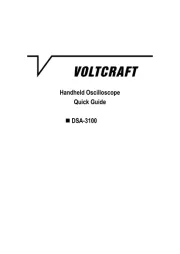
13 September 2025
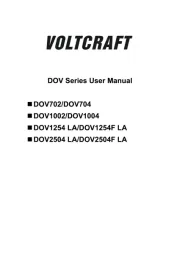
10 Maart 2025

11 December 2024

11 November 2024

8 Juni 2024

4 Mei 2024

4 Mei 2024

8 April 2024
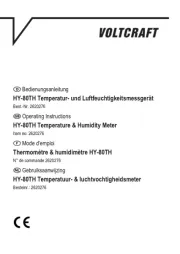
8 April 2024

26 Maart 2024
Handleiding Meetapparatuur
- J.P. Instruments
- Weltron
- IFM
- Stamos
- Danfoss
- UHoo
- Tempo
- Powerfix
- Lascar Electronics
- Testo
- Finder
- Sekonic
- Sanwa
- Benning
- Doyon
Nieuwste handleidingen voor Meetapparatuur
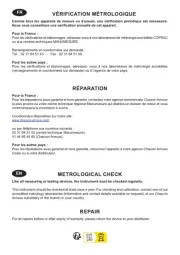
14 September 2025

13 September 2025
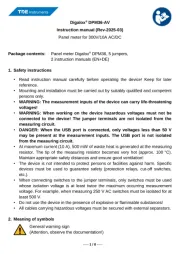
13 September 2025

13 September 2025
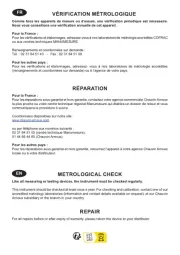
12 September 2025
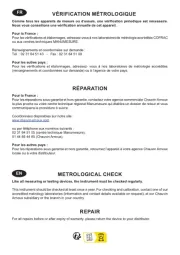
12 September 2025
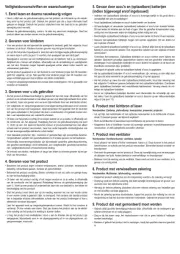
12 September 2025
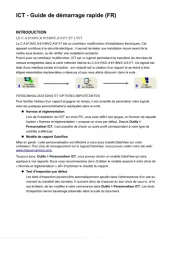
11 September 2025
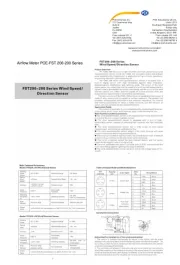
11 September 2025
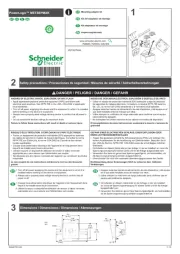
8 September 2025